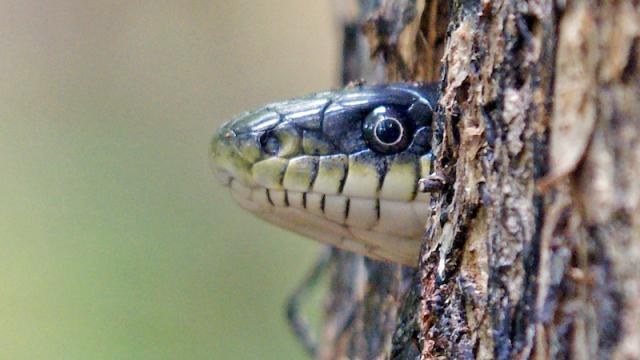In the back of your mind, you probably realise that nature documentaries aren’t literally nonfiction depictions of actual things that happened in nature. As it turns out, many of the techniques and tricks used in Hollywood movies are also applied to nature documentaries — even when the footage is real.
Image from kumweni.
If you’re familiar with filmmaking, and particularly how documentaries are made, then many of the techniques are probably no surprise to you. But understanding which techniques are being used in a documentary help you realise when what you’re being shown may not be exactly what happened. Filmmaker Simon Cade recently shared what some of these techniques are in a popular video that’s been making the rounds. For example, some techniques include:
- Adding in sound effects: Documentary makers can only get so close to wildlife without disturbing them, which often means they can’t capture good sound with shots. Nature films particularly rely on telescopic lenses, so they literally can’t record the distant sounds of the animals. The appropriate sounds are added in later, usually using clips created in a studio.
- Editing footage to show a scenario: Filming wild animals takes days, if not weeks or months, which means filmmakers end up with a lot of footage to work with. They take all that footage and edit together a sequence of events that didn’t actually happen around the same time in order to show you a complete situation and story (like two males fighting and then the winner going off with the female, for example).
- Creating a narrative: To draw you in, the documentary may be put together in a way that builds a story with you rooting for one of the animals shown (usually a cute, fluffy one) so that you’re emotionally invested. Of course, some documentaries don’t show the predator’s babies it has to feed or what will happen if it doesn’t get a meal. Music is also often used to influence your emotions and the tone of what you’re watching, as is the case in any filmmaking.
While there have been cases of animals being harmed or even killed in nature documentaries, most famously in a 1958 Disney production on lemmings, treatment and respect of animals has improved quite a lot. Some documentaries also build habitats in a studio or other non-natural environment to capture footage that might be impossible otherwise (especially for very small creatures and time-lapse sequences).
Simon Cade’s suggestion that nature documentaries are “fake” is a dramatic overstatement, but if you’re concerned about how editing and other techniques are being used to influence the way you view wildlife (especially predators), do your own research after you watch documentaries to learn more about the “bad guys” and their important place in the circle of life.

Comments
One response to “The Tricks Nature Documentaries Use To Draw You In”
Well, the footage is real. It is cut to be able to show a narrative – if there was no narrative then it might as well be a whole bunch of stills in a NatGeo magazine.
The viewer is usually aware of the cuts as the filming angle has changed or the time of day is different or the narrator starts talking about a time later than the events in the previous shot.
Surely everyone already knows this? Just as people know that predators will starve to death if they don’t cause the death of other animals and eat them…
True, but I remember a case a few years back where the documentary showed a pregnant animal (can’t remember which) in the wild, and then it going into it’s burrow. The next shot showed it giving birth, so everyone assumed the filmakers had cleverly been able to film in the mother’s burrow. Turns out the shot inside the “burrow” was actually from a simulated burrow in a zoo, and the mother giving birth was a captive animal that had lived its whole life in the Zoo. It was a completely different female than shown in the earlier wild footage.
There was a really good documentary series (on Netfix?) with The ‘Bro all about insects, and the last episode was a “making of” doco, which showed shot after shot that was not done in the wild, but on a tray of dirt and leaves under studio lights. I didn’t mind though. The cinematography was amazing, as was the info the viewer learned in the process.
These techniques all apply to so called reality TV as well, especially creating a so-called narrative.